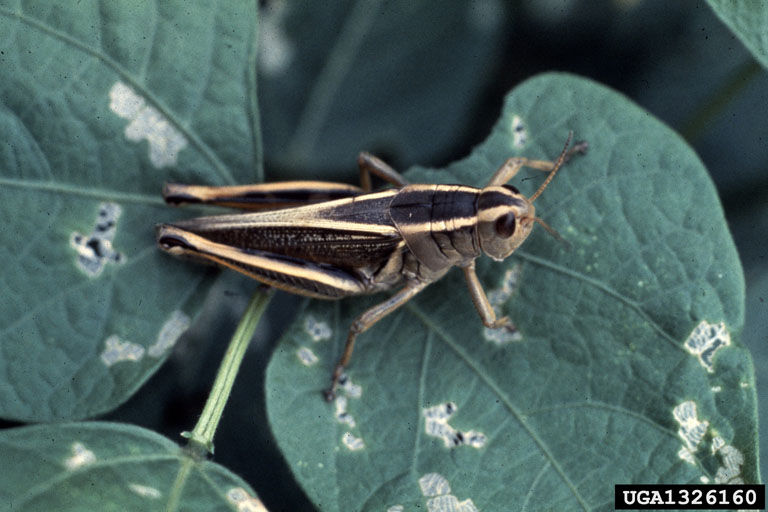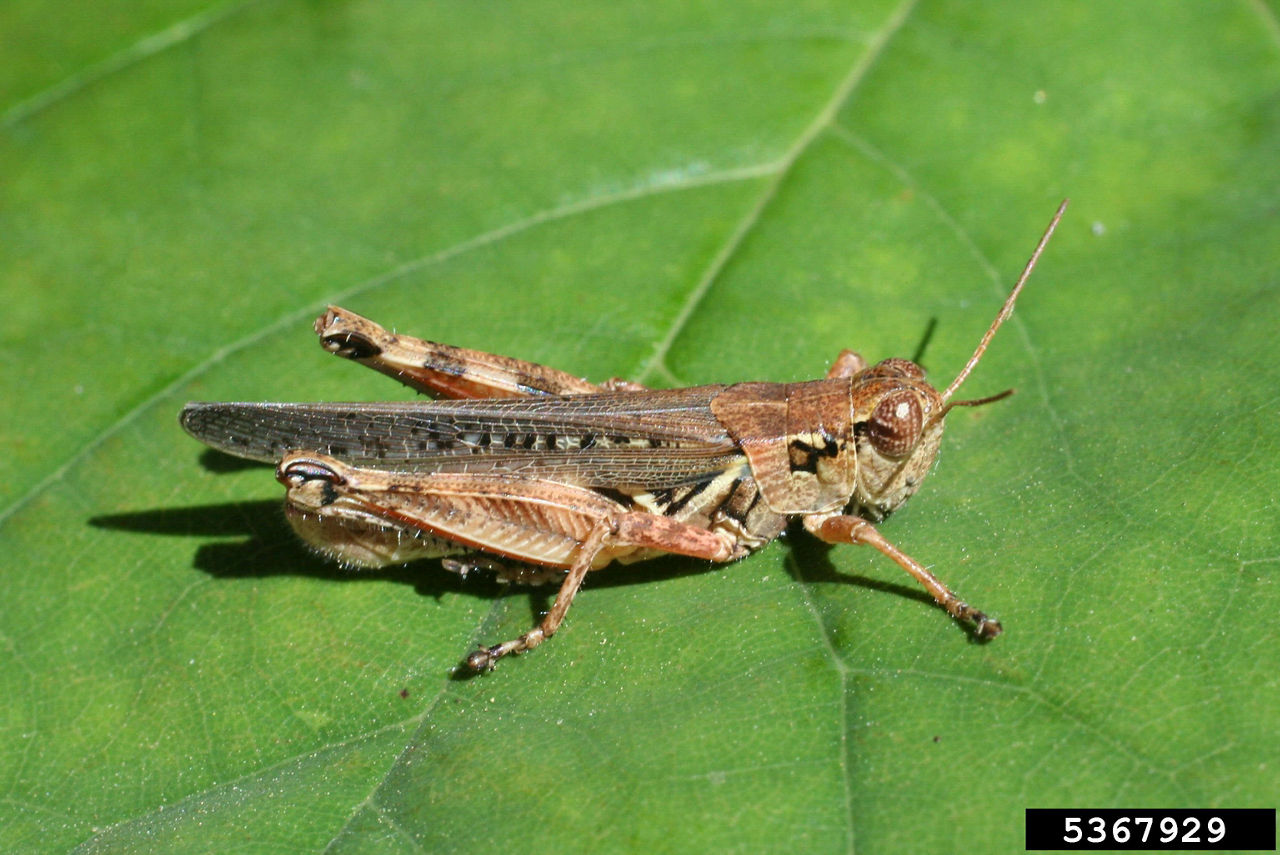Identifying and Managing Grasshoppers
May 16, 2025
Grasshoppers play a huge role in the ecosystem. They serve as a food source for various predators, including birds and small mammals. However, they can also become pests, particularly in agricultural settings, where they may cause considerable damage to crops. Identifying different grasshopper species involves a systematic approach that includes observing physical characteristics, utilizing collection methods, and consulting identification resources.
Physical Characteristics: Grasshoppers vary in size, color, and markings. Key features to observe include body length, wing shape, and coloration patterns. For instance, some species may have distinctive stripes or spots that can help in identification (Figures 1 and 2).


Collection Methods: To collect grasshoppers for identification, one can use a sweep net to capture them from various habitats. Sampling should be done in different areas to ensure a representative collection. The square foot method can also be employed, where grasshoppers are counted in designated square foot areas to assess population density and diversity.
Life Cycle Stages: Grasshoppers undergo several nymphal instars before reaching adulthood. Nymphs are typically smaller and may lack wings, making them easier to confuse with other insects. Understanding the life cycle is crucial for accurate identification.
Consulting Resources: After collection, grasshoppers can be identified using field guides or online databases that provide images and descriptions of various species. Consulting entomologists or local agricultural extension services can also aid in identification.
Habitat Considerations: Different species may prefer specific habitats, such as grasslands, agricultural fields, or wetlands. Observing the environment where the grasshoppers are found can provide additional clues to their identity.
Grasshopper management is essential for protecting crops from damage caused by these pests. Effective management strategies include monitoring grasshopper populations, implementing cultural practices, and utilizing integrated pest management (IPM) techniques. Regular scouting of fields helps identify grasshopper presence and density, allowing farmers to take timely action. Cultural practices such as crop rotation and maintaining healthy soil can disrupt grasshopper life cycles and reduce populations. When necessary, targeted insecticide applications can be employed, ensuring minimal impact on beneficial insects. By combining these strategies, farmers can effectively manage grasshopper populations and safeguard their crops. Always read and follow pesticide label directions.
Thresholds for Treatment in Various Crops:
Soybeans: Consider treatment if 8 or more adult grasshoppers per square yard or 15 or more nymphs per square yard are present. Consider an insecticide if more than 5% of the pods are fed upon.1
Corn: Consider treatment when 5 to 8 grasshoppers per square yard are present from just before pollination until anthesis is complete.2
Wheat: Consider treatment if 21 to 40 grasshoppers per square yard are feeding in the field margins or 8 to 14 grasshoppers per square yard are feeding in the field.3
Channel Agronomist
Mark Bartel
Sources
1Dean, A. and Hodgson, E. 2024. Hungry hungry (grass) hoppers. Integrated Crop Management. Iowa State University Extension and Outreach. https://crops.extension.iastate.edu/cropnews/2024/07/hungry-hungry-grass-hoppers
2Zukoff, A., McCornack, B.P., and Whitworth, R.J. 2024. Corn insect pest management 2024. K-State Research and Extension. Kansas State University. https://bookstore.ksre.ksu.edu/pubs/corn-insect-pest-management-2024_MF810.pdf
3Varenhorst, A., Wagner, P., and Rozeboom, P. 2021. Grasshoppers are causing concerns in South Dakota crops. South Dakota State University Extension. https://extension.sdstate.edu/grasshoppers-are-causing-concerns-south-dakota-crops
Royer, T.A. and Mulder, P.G. 2017. Grasshopper management in rangeland, pastures, and crops. Oklahoma State University Cooperative Extension Service, EPP-7196. Oklahoma State University. https://extension.okstate.edu/fact-sheets/grasshopper-management-in-rangeland-pastures-and-crops.html
Bauernfeind, R.J. 2005. Grasshoppers in the lawn and garden. Home and Horticultural Pests. Kansas State University. https://bookstore.ksre.ksu.edu/pubs/grasshoppers-in-the-lawn-and-garden-home-and-horticultural-pests_L868.PDF
Web sources verified 3/17/25 1110_544306